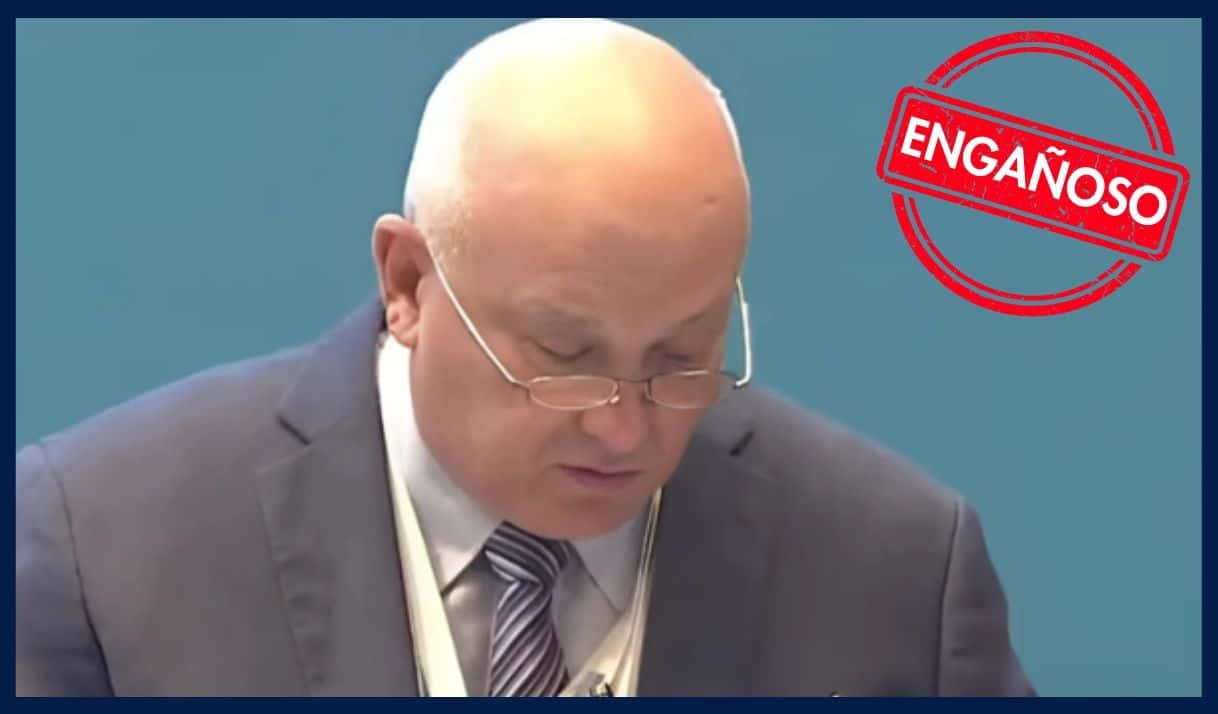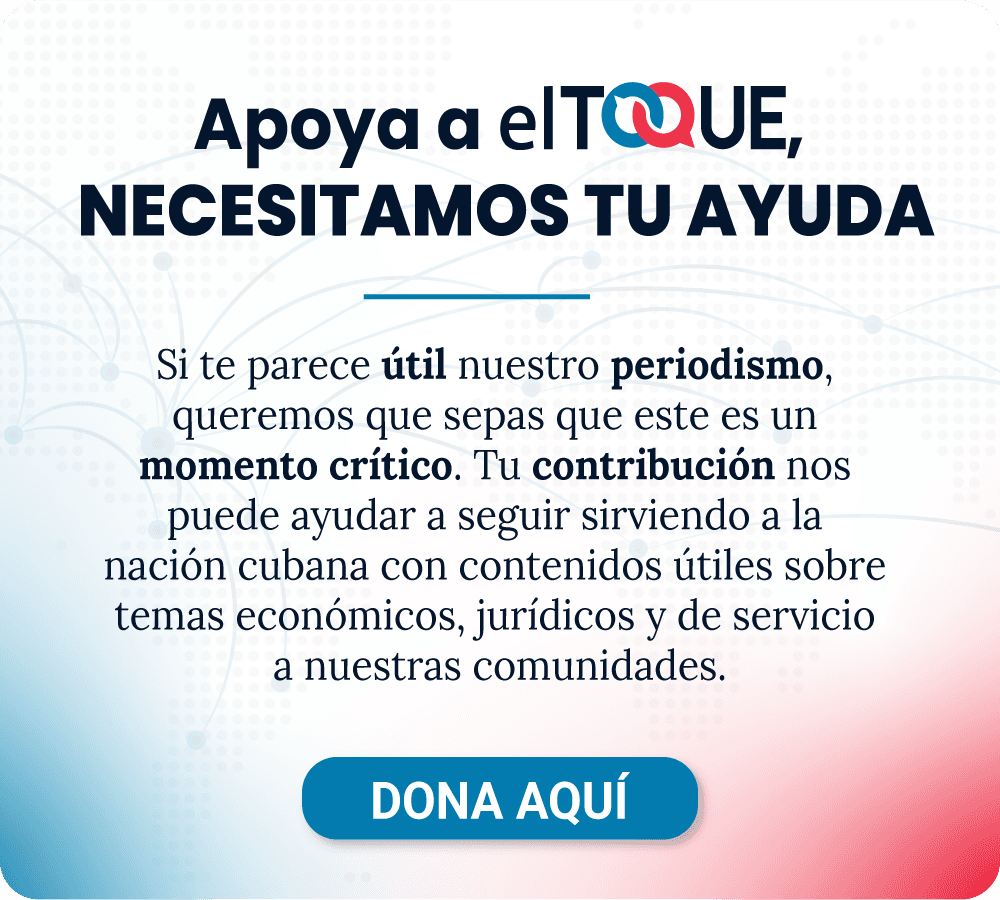Cuban Government Blames USA for Its Agricultural Crisis

Jorge Luis Tapia Fonseca, Cuban Deputy Prime Minister, at the Second UN Food Systems Summit (UNFSS+4) in Ethiopia. Photo: X/@CubaMINREX.
In his speech before the Second UN Summit on Food Systems (UNFSS+4) on July 28, 2025, Jorge Luis Tapia, Cuba’s deputy prime minister grossly misled the body about the cause of Cuba’s agricultural and food crisis. By casting the entire blame for the crisis on the United States sanctions, the official conveniently ignored a series of internal failures: structural factors, failed economic policies promoted by the Communist Party of Cuba (PCC), and an investment pattern that prioritizes tourism over the farm sector.
“This cruel economic war [by the US] does not allow us to establish an agricultural sector capable of meeting all the food demands of our population, as we do not have the essential production inputs such as fertilizers, pesticides, energy inputs, machinery, agricultural implements and spare parts, and irrigation systems, among others,” said Tapia.
This deceptive narrative, common in official Cuban discourse and echoed by state media, omits key internal causes and distorts reality. Data shows that Cuba imports food from the US, while the Havana regime allocates a tiny fraction of its investment to agriculture. Adding to this is the centralized and restrictive economic model the government maintains, that stifles national agricultural producers.
The official newspaper Granma highlighted that the deputy prime minister “reaffirmed Cuba’s willingness to contribute to putting the Food Systems at the center of their agendas for economic and social development, to combat hunger, poverty and inequality.”
However, the state media does not mention that extreme poverty in Cuba engulfed up to 89% of the population in 2024, according to data from the non-governmental organization Cuban Human Rights Observatory. That percentage was based on a study they carried out, which interviewed 1,148 people in the country’s provinces. More conservatively, sociologist Mayra Espina estimates that “between 40 and 45% of the Cuban population is in a situation of poverty.”
Economist Pedro Monreal criticized Tapia’s statements and Granma’s coverage, describing them on social media as “political fantasy.” “The last thing the Cuban government can boast about is being able to position food systems at the center of anything,” he wrote. According to the economist, food insecurity in Cuba is due to internal structural causes, such as a state-owned property system that limits the development of a more efficient production model.
“The inability to obtain machinery and supplies is due to various factors, including the country’s failed model of international specialization and an investment pattern that relegates agriculture to the sidelines while investing in empty hotels,” Monreal said.
For its part, following the deputy prime minister’s statements, the Food Monitor Program [a project of the Colombian-based research NGO 4Metrica] noted: “the Cuban government has manipulated the discourse on food security, while food on the island has become increasingly privatized, dollarized, and controlled by the State.”
“There’s no food system in a country that’s lost over 67% of its national production, and where 80% of the food is imported. In Cuba, Gaesa, a conglomerate under military control, is the entity with the greatest power, and they have funneled imports and foreign currency into monopolized distribution channels. The result? A food system that has been captured by corporate-military interests,” the organization concluded.
Structural problems the deputy Minister ignored
A recent study published by the think tank Cuba Siglo 21 points out: “the food crisis in Cuba has reached dramatic levels, revealing the structural failure of the political, economic, and productive system.”
In their article “No country without the countryside, no future with Gaesa,” the investigators warn that, according to data from the World Food Program (WFP) and UNICEF, “the country now depends on international donations to guarantee a minimum supply of basic products, while more than 80% of the food consumed is imported, largely from the United States.”
High external dependence, combined with low levels of investment in agriculture, and state control over the economy, has made food one of the main sources of concern for the Cuban population, according to several experts.
In 2020, the Association of Independent Farmers and the Cuban chapter of the Latin American Federation of Rural Women presented a proposal entitled “Without the countryside, there is no country,” listing five demands for the development of agricultural production on the island. These have been ignored by the Cuban state.
These include:
- End the current centralized state food products purchasing system: Allow the rural producers to sell their products freely, eliminating the obligation to sell a portion to the State at absurdly low prices.
- Free market policies: allow farmers to set prices according to supply and demand to encourage production.
- Direct international trade: authorize exports and imports without state intermediaries, including agreements with the US, which Washington allows when it comes to private and independent farmers.
- Tax moratorium: exempt producers from paying taxes for a decade to reinvest in infrastructure, technology, and machinery.
- Guaranteed private property: grant permanent property titles on land and equipment to facilitate access to credit, insurance, and partnerships with investors.
While the authorities blame the embargo, Cuban producers describe a reality marked by non-payment, bureaucratic obstacles, and a lack of basic supplies.
A rice producer from the Cienfuegos town of Aguada de Pasajeros, who asked to remain anonymous for fear of reprisals, told ElToque that the Cuban government owes him “payments for more than ten months, while his equipment is ever more obsolete and defective and there’s a lack of fuel, spare parts, herbicides, fungicides and insecticides.”
The farmer added: “I’ve been a producer for over three decades and I can assure you that this is the worst moment ever for the Cuban countryside and the commercialization of food products. The principal problems are the obstacles imposed on the farmers and the benefits that the government wants to obtain at the cost of those of us who work.”
Rice, an essential food in the Cuban diet, is currently facing one of its worst production crises. In 2024, Cuba barely managed to harvest around 80,000 tons, equivalent to merely 11% of national demand. Six years ago, that figure was over three times higher, according to reports in the official newspaper Granma. Faced with a sustained decline in production, the country has had to increase its imports to try to meet domestic consumption.
In May 2021, the Cuban government announced the implementation of 63 measures to supposedly boost agricultural production on the island. Two years later, the authorities admitted: “the expected results were not achieved.”
“The problems affecting the Cuban agricultural sector exceed the scope of the capacities and powers of the Ministry of Agriculture, requiring more comprehensive attention from the government. We understand the agency’s senior staff has had to focus the greater part of their time on crisis management (…) and that they haven’t always been able to dedicate the time needed for strategies leading to the sustainable development of the sector,” Osmani Aguilar, chairman of the Cuban Parliament’s agri-food commission, declared in December 2023.
What the US-Cuba trade data shows
Despite US sanctions, the direct sale of certain US agricultural and food products to Cuba is permitted. These transactions are legal and frequent, demonstrating that access to basic inputs is not completely “blockaded,” as official propaganda claims.
According to the US-Cuba Trade and Economic Council, in May 2025 alone, sales of agricultural products from the United States to Cuba reached $37 million, the highest monthly figure recorded to date. In total, between January and May, exports of food and agricultural products—including soybean oil, jojoba oil [used I skincare and haircare products], coffee extracts, and tires—totaled $205 million, a 16.6% increase compared to the same period in 2024.
“From the first US exports of corn, wheat, and rice in December 2001 to today, Cubans have purchased approximately $8 billion in agricultural and food products, paid for in cash,” explained John Kavulich, director of the US-Cuba Trade and Economic Council.
According to official US data shared by economist Pedro Monreal on his social media, the value of chicken exports from that country to Cuba set a historic record in 2024, exceeding $300 million annually for the first time. In terms of volume, as measured by weight, it was the fourth highest record in tons.
In the last four years, the total value of the US chicken that Cuba has imported comes to 1.18 billion dollars. This product has become the principal source of protein for the population and is one of the products most consumed, although currently its scarcity and high price has rendered it inaccessible to many households.
Even so, as Monreal warns, these imports barely mitigate the grave internal agricultural crisis “in which there’s still no light to be seen at the end of the tunnel.”
Investments in tourism prioritized over agriculture
2024 closed with a contraction of 1.1% in gross domestic product (GDP), according to official data. “Primary production (agriculture, cattle, and mining) has been the most affected, with a 53% decline. There has also been a decline in secondary activity (sugar and manufacturing, 23%) and tertiary activity (social and non-social services, 6%),” explained Economy Minister Joaquín Alonso Vazquez.
However, last year the Cuban government invested 14 times more in tourism—including hotel construction—than in agriculture – 37.4% of the total investment versus 2.7% – despite the fact that official discourse speaks of agricultural production as the priority, in order to ensure the population’s food security.
Economist Pedro Monreal has been warning for years about the distorted pattern of government spending. He has pointed out that “the Cuban government maintains a skewed priority that perpetuates a chronic investment distortion focused on tourism.”
Monreal emphasized that this trend persists even though the tourism sector is no longer the “motor force” that the authorities insist on presenting it as. In 2024, hotel occupancy fell to 23%, below the 25% recorded in 2023, reflecting sustained decline.
“The contradiction between a declining tourism that continues swallowing excessive proportions of the scarce investment resources, and a food crisis with no direction and neglected as a priority, expresses, at the very least, a policy of immobility,” the expert noted.
Although the US embargo has an impact on the Cuban economy, the agricultural and food crisis has deep internal causes that the authorities systematically ignore. To blame only the external sanctions is a distortion of reality and fails to address the real responsibilities of the Cuban Communist Party regime for the current Cuban crisis.
This article was translated into English from the original in Spanish.










Comments
We moderate comments on this site. If you want to know more details, read our Privacy Policy
Your email address will not be published. Mandatory fields are marked with *